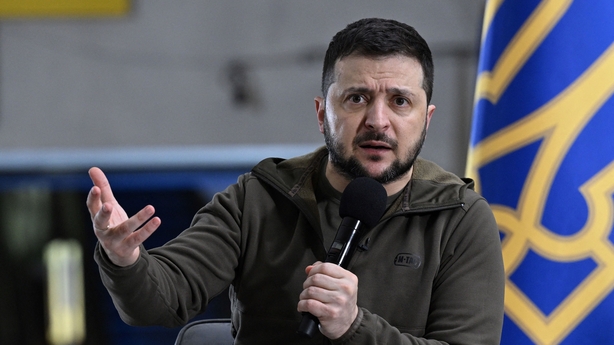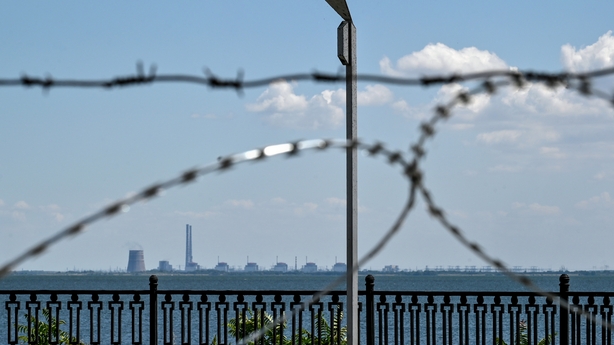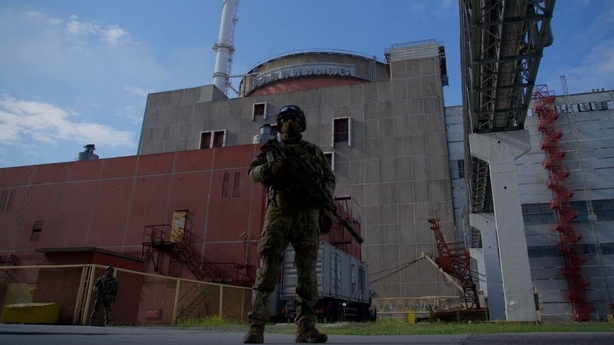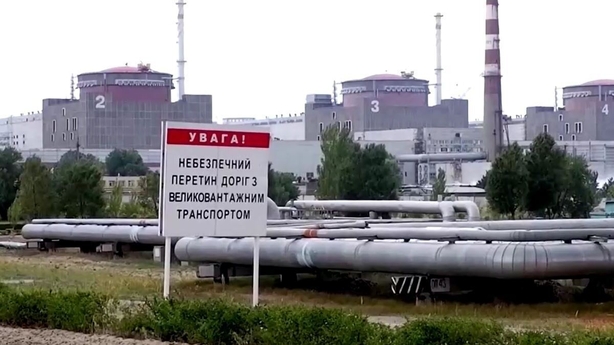Shelling near Europe's largest nuclear power plant in Ukraine has alarmed the international community over the potential threat of a nuclear disaster.
Concerns were first raised when Russia took control of the Zaporizhzhia facility in March, but more recently, recurring shelling around the facility for nearly two weeks has sparked calls for an immediate ceasefire in the area.
Nuclear experts fear fighting might damage the plant's spent fuel pools or the reactors.
Last Thursday, UN Secretary General Antonio Guterres called on both Russia and Ukraine to halt all fighting near the plant, warning it could lead to catastrophic consequences.
The head of the International Atomic Energy Agency Rafael Mariano Grozzi said based on information provided by Ukraine, systems important for nuclear safety and security had not been affected, but that could change at any moment, warning of disaster if the fighting does not stop.
Moscow says Ukraine is recklessly firing at the plant.

Kyiv says Russian troops struck it themselves and are also using the plant as a shield to provide cover while they bombard nearby Ukrainian-held towns and cities.
Ukrainian President Volodymyr Zelensky has warned a "catastrophe" at the Russian-controlled facility would threaten the whole of Europe.
What do we know about the Zaporizhzhia Nuclear Power Plant?
Zaporizhzhia NPP was the first nuclear power plant built in Ukraine. It is the biggest nuclear power plant in Europe, and the ninth largest in the world.
In 1977, the USSR Council of Ministers decided to build the facility under a unified project of nuclear power plants with a VVER-1000 reactor. The six reactors in Zaporizhzhia were brought online between 1984 and 1995.
Pre-invasion, the ZNPP produced one-fifth of Ukraine's electricity and almost half the energy generated by the country's nuclear power facilities.
Over the years, it has produced more than 1.1 trillion kWh of electricity.

Is ZNPP safer than the Chernobyl plant?
Zaporizhzhia is a different type of reactor to Chernobyl, made from different materials.
It is a light water reactor known as a VVER-1000. It uses water in the reactor core to slow down (moderate) the neutrons needed to drive and control the fission reactions taking place.
By comparison, the Chernobyl reactors used graphite as the moderator material.
Tom Scott, Professor in Materials at Bristol University, explained that when Chernobyl Unit 4 exploded in April 1986, the graphite caught fire and burnt for two weeks, releasing substantial amounts of radioactivity.
However, he said a VVER reactor is made of materials such as concrete and stainless steel, which could not catch fire or burn like graphite, even at high temperatures and hence a Chernobyl-level incident simply couldn't happen at Zaporizhzhia.
"The VVER-1000 is a relatively modern and robust reactor design," Professor Scott said.
"The reactor is housed inside a heavily reinforced steel and concrete building that is designed to protect against natural disasters and-or man-made incidents, such as aircraft crashes or reactor accidents.
"As such I don't believe there would be a high chance of a breach of the containment building from the outside - even if it was hit by an explosive shell and, even less likely, the reactor itself could be damaged by such. This means the radioactive material is well protected."

Who is currently operating the plant?
All four nuclear power plants in Ukraine are operated by a state company – Energoatom.
The energy agency said its workers are still operating the Zaporizhzhia plant, despite being under Russian occupation since March.
According to a post on Energoatom’s Telegram account, the plant is operating with the risk of violating radiation and fire safety standards, and it claimed periodic shelling by Russian troops with anti-aircraft missiles caused a serious risk to the safe operation of the plant.
Both the Russians and Ukrainians said radiation levels at the plant were normal.
Why is military activity around the ZNPP dangerous?
Some damage has already been caused; a power station has been struck near where radioactive materials are stored.
Shelling near one of the plant's six reactors caused "extensive smoke" and "several radiation sensors are damaged," according to Energoatom.
Inside the plant, there are other risks. A spokesman for the Ukrainian Defense Ministry's intelligence division, Andrei Yusov, said on Telegram that Russian forces had laid mines at the plant’s power units.
Both Energoatom and the IAEA have also warned that stressed workers could unwittingly make mistakes due to the psychological impact of the conflict and working conditions under Russian occupation.

Who is monitoring safety levels at the plant?
In relation to safeguards, the IAEA is continuing to receive remote safeguards data from the sites of the four operational nuclear power plants (NPPs) in Ukraine.
However, the IAEA has not been able to visit the ZNPP since before the conflict began, almost half a year ago.
Director General Rafael Mariano Grozzi has emphasised the urgent need for the IAEA to be able to send an expert mission to carry out essential nuclear safety, security and safeguards work there.
What would happen if there was a radioactive leak?
The President of the European Nuclear Society, Professor Leon Cizelj, feels such a development is not very probable.
"In the unlikely case that one or more reactors would be damaged and go into a meltdown, the most impacted would be the Russian military forces residing in the area of the Zaporizhzhia NPP," Professor Cizelj said.
"They would be likely exposed to serious doses, but unlikely to develop acute radiation sickness or even die - assuming they would not try to approach damaged reactor or reactors."
What are the human or environmental concerns if the plant was damaged?
Professor Cizelj would expect some moderate health consequences for the military located in the plant area and limited health consequences for the plant staff and the population residing around 20km to 30km from the plant.
For the same area, he said, the farming in the future will have to receive some attention. He believes that in the EU, the radiation would be easily detected and measured, but will most probably cause no concerns for people or environment.

What infrastructure damage would be most dangerous?
Ukrainian staff must take orders from Russian military, making it extremely difficult to work under such conditions.
Professor Cizelz is concerned for the wellbeing and personal safety of the plant workers and feels they should be at the centre of the international attention.
"Russians are therefore in position to do whatever they want to the plant. The occasional shelling may be understood more as fearmongering," Professor Cizelz said.
"Firstly, the deep fear of radiation rooted in people of EU may contribute to the faster phase out of remaining nuclear power and open the doors widely for gas and oil from Russia, and secondly, in case of any damage to the plant, they will simply blame Ukrainians."
What precautionary measures are being taken in case of a nuclear disaster?
The EU is closely monitoring the situation around Zaporizhzhia nuclear plant.
Via its civil protection mechanism, the EU said it has coordinated deliveries of iodide potassium tablets from Spain, France, and its rescEU stockpiles, hosted by Germany to Ukraine.
The EU has also mobilised its rescEU CBRN stockpiles to deliver relevant equipment to Ukraine.
In June 2022, the EU delivered 300,000 specialised protection suits, 5,600 litres of decontaminants and 850 pieces of equipment for decontamination operations from its rescEU reserves.
Earlier this month Romania’s Ministry of Health announced a national campaign to distribute potassium iodide 65mg for people aged under 40, warning it is administered only in the case of a nuclear incident.
While last week Romania donated iodine pills to neighbouring Moldova. Zaporizhzhia NPP is around 500 kilometres from the Moldova-Ukraine border.
"Although it may seem worrying, the likelihood of a serious nuclear release is still small and, hence, the risk to Europe is small," according to Professor Scott.
"This doesn't mean that sensible precautions shouldn't be considered and the UK, along with its European neighbours, needs to consider what 'suitably prepared' should look like in terms of being able to respond to a Russian-instigated nuclear incident in Ukraine or, indeed, on home soil."







